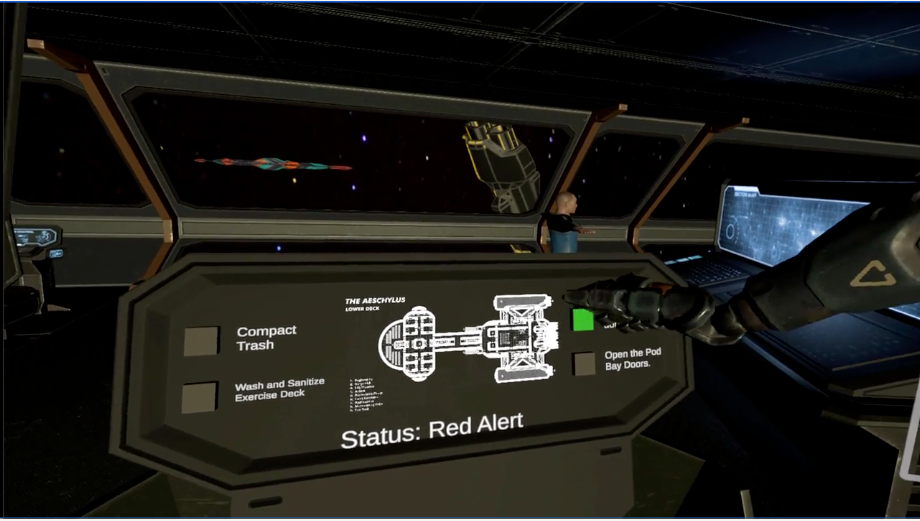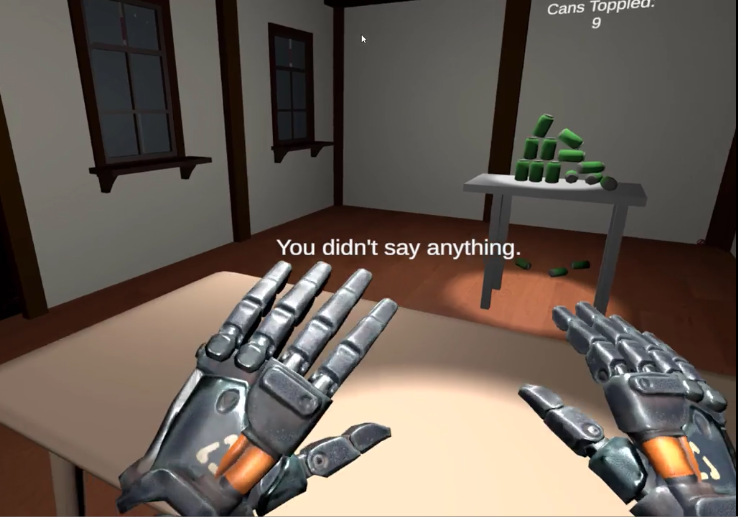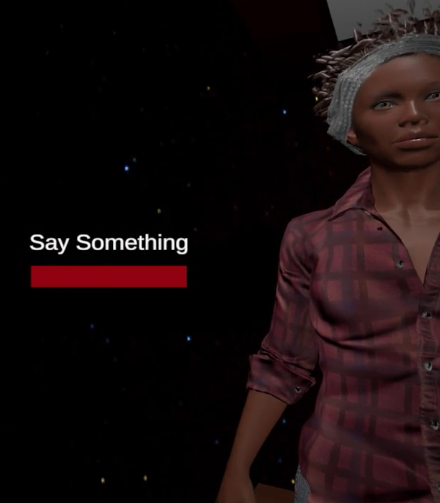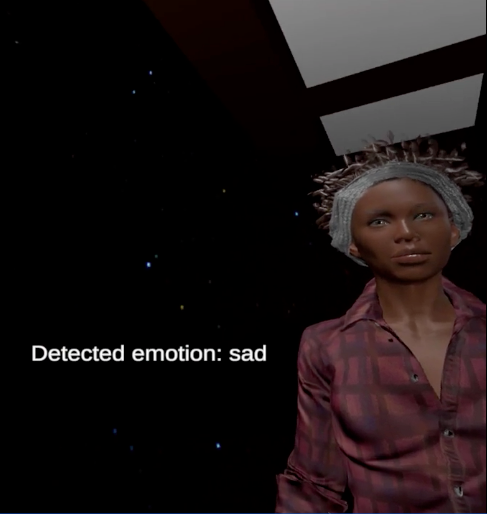Transfordance: The Decentering Effect of Transformative Affordances in Virtual Reality in The Hollow Reach
a technological demonstration for the International Conference on Interactive Digital Storytelling (ICIDS) 2021
by John T. Murray and Mark C. Marino
The Hollow Reach is a choice-based virtual reality (VR) experience built on becoming posthuman to overcome the trauma of emotional and physical loss. What at first appears to be an adventure game turns out to be an exploration of psychological and physical recovery, not a retreat from reality but a coming to terms with it. In this interactive puzzle game, virtual reality offers a space of recuperation through adaptation and prostheses. In this piece, the player progresses from the human to the posthuman only by letting go of their notions of what is and is not under their control to encounter a life augmented and transformed by the digital.
The Bridge of the Deck: In this environment drawn from science fiction television and movies, the player can participate in a fantasy realm in which they seem to be in control in stark contrast to their inability to control their new prosthetic arms and emotions. The scene draws the player in through the technique of transfordance.

Transfordance: when mechanics decenter normative embodied experience to create engagement through narrative framing. Transfordance is a portmanteau of “transformative affordance,” where an affordance is “the relationship between a physical object and a person.” Rather than just a sensorimotor substitution, a “transfordance” is an affordance that evokes a re-assessment by the user of previous affordances. In other words, a transfordance decenters what was previously treated as “normal” affordances.
Physical Interaction: At the most basic level, The Reach, as a fictional recovery system, is a training simulation for those with new prosthetics. However, our project’s physical interaction is built on the model of transfordance, in which the player cannot simply use the prosthetic arms but must pass through an experience of loss of control. We call this interactive model “transfordance.” Transfordance offers a way of decentering able-bodiedness, to make an experience of VR a transformative encounter.

Voice Interaction: The player character must not only learn to control their body but also must learn to control their emotions. As participants vocalize lines of dialogue in a range of emotional registers, the system notes and responds to help them navigate their feelings.


Gaze Interaction: Though in a recovery system, the player character has retreated into memory and fantasy, turning their gaze from the reality of their traumatic loss. In The Hollow Reach, when other characters demand the player’s attention, the player will choose whether they can. Like controlling their emotions and controlling their prosthesis, confronting a gaze is a central challenge in the character’s emotional recovery.
Created and Conceived by:
John Murray and Mark Marino
CAST
- SYNI CHAMPION as Jordan
- RANDY VI as First Officer/Friend
- MARK MARINO as Klaxxi Commander
Sounds from Zapsplat and Canva
Assets from Unity Asset Store
Programming
John Murray
About the Creators:
John T. Murray is an Assistant Professor of Games and Interactive Media department at the University of Central Florida, USA. He is co-author of Flash: Building the Interactive Web (MIT Press, 2014) and Adventure Games: Playing the Outsider (Bloomsbury, 2020). His research focuses on interactive narratives and reality media (augmented, virtual and mixed reality). His investigation includes both existing and future computational media platforms, including authoring tools and affordances and measuring and evaluating complex experiences created for them using emerging techniques such as eye-tracking, facial action units, machine learning, and physiological signals.
Mark C. Marino is a writer and scholar of digital literature who teaches at the University of Southern California. He is the Director of Communication of the Electronic Literature Organization (http://eliterature.org). His works include “Living Will,” “a show of hands,” and “Marginalia in the Library of Babel.” He was one of ten co-authors of 10 PRINT CHR$(205.5+RND(1)); : GOTO 10 (http://10print.org) (MIT 2013) and was a collaborator with Jessica Pressman and Jeremy Douglass on Reading Project: A Collaborative Analysis of William Poundstone's Project for Tachistoscope {Bottomless Pit} (Iowa Press 2015). His latest book is Critical Code Studies (MIT 2020) http://criticalcodestudies.com
Personal Website: http://markcmarino.com